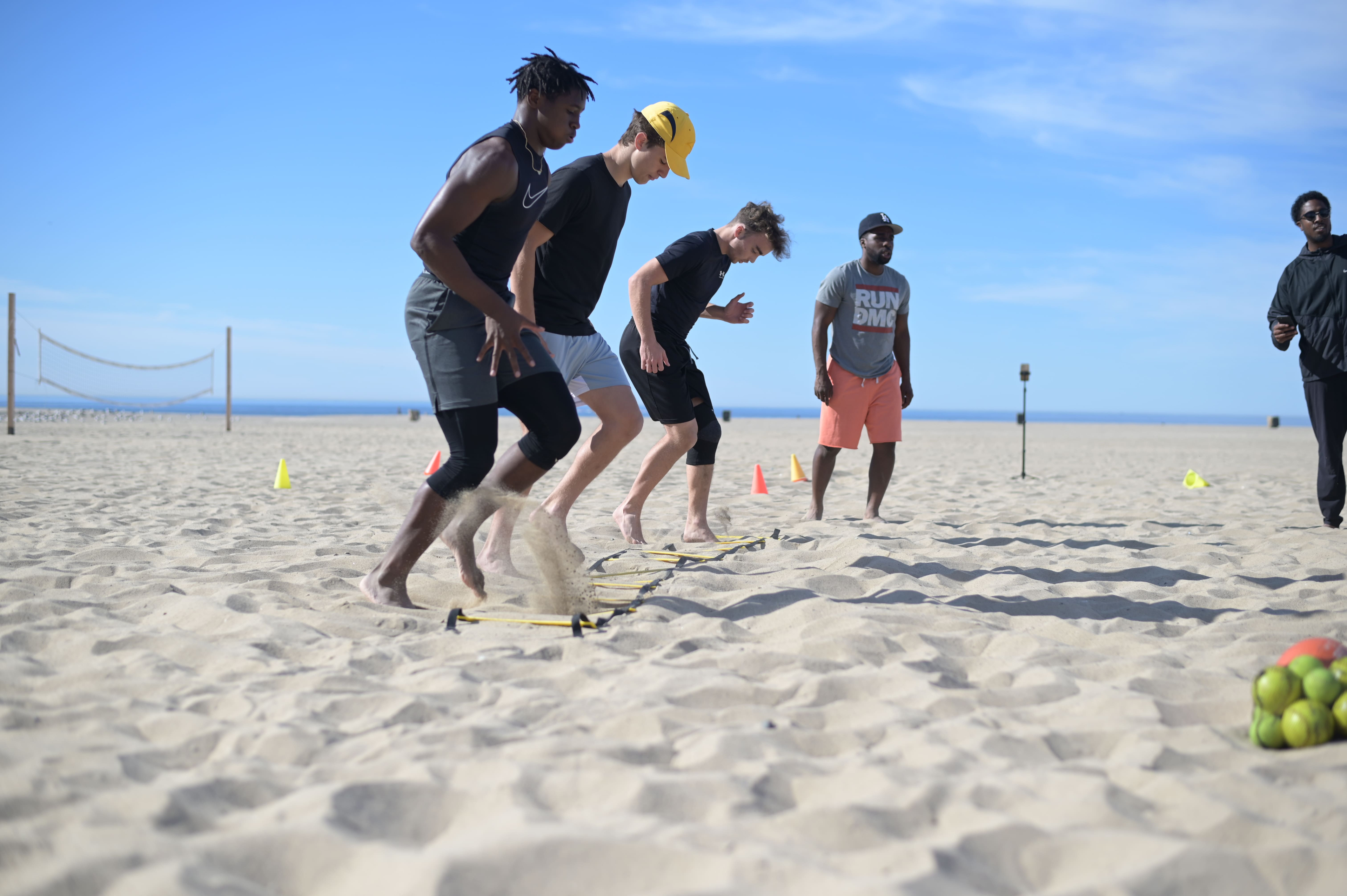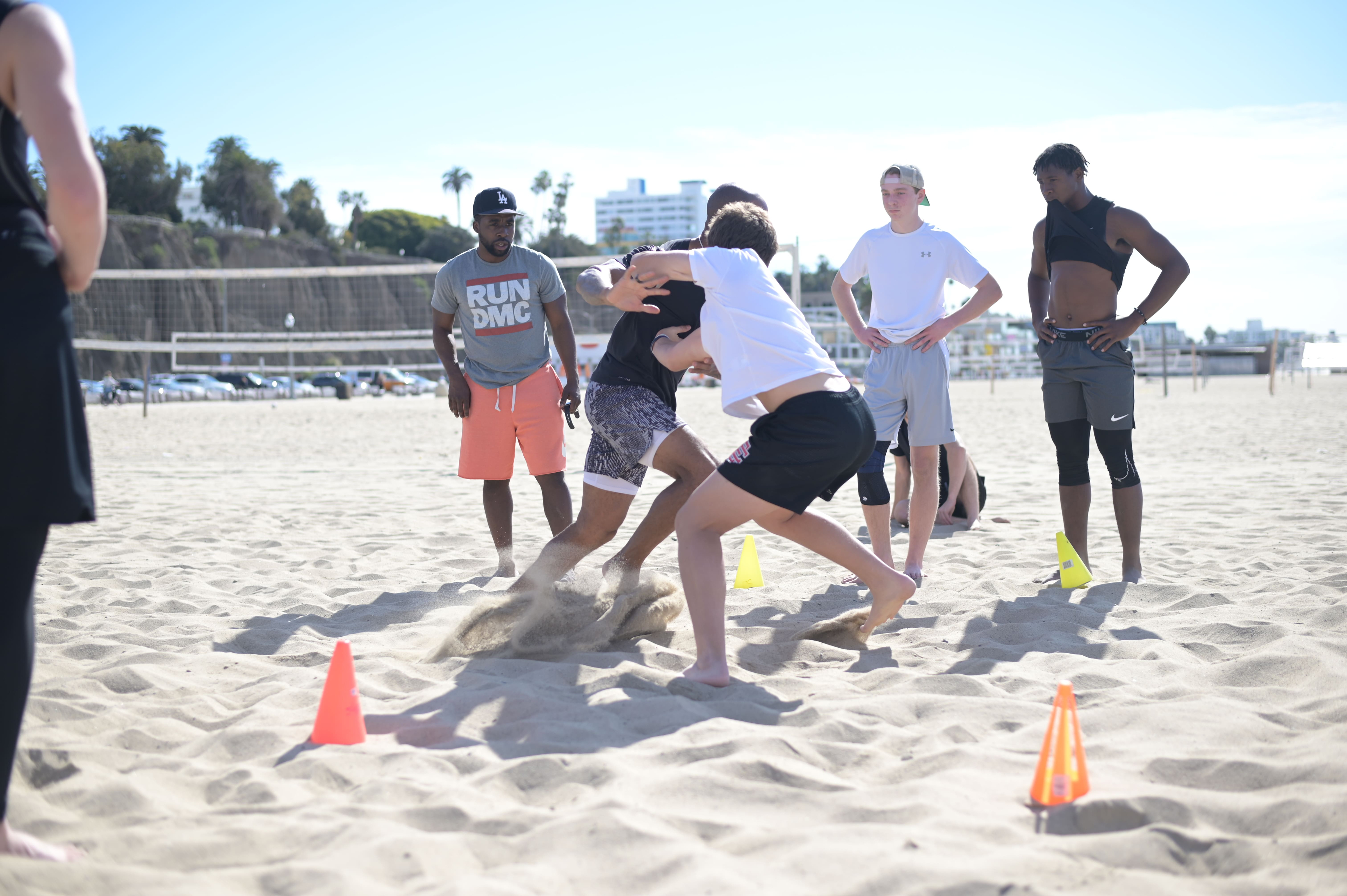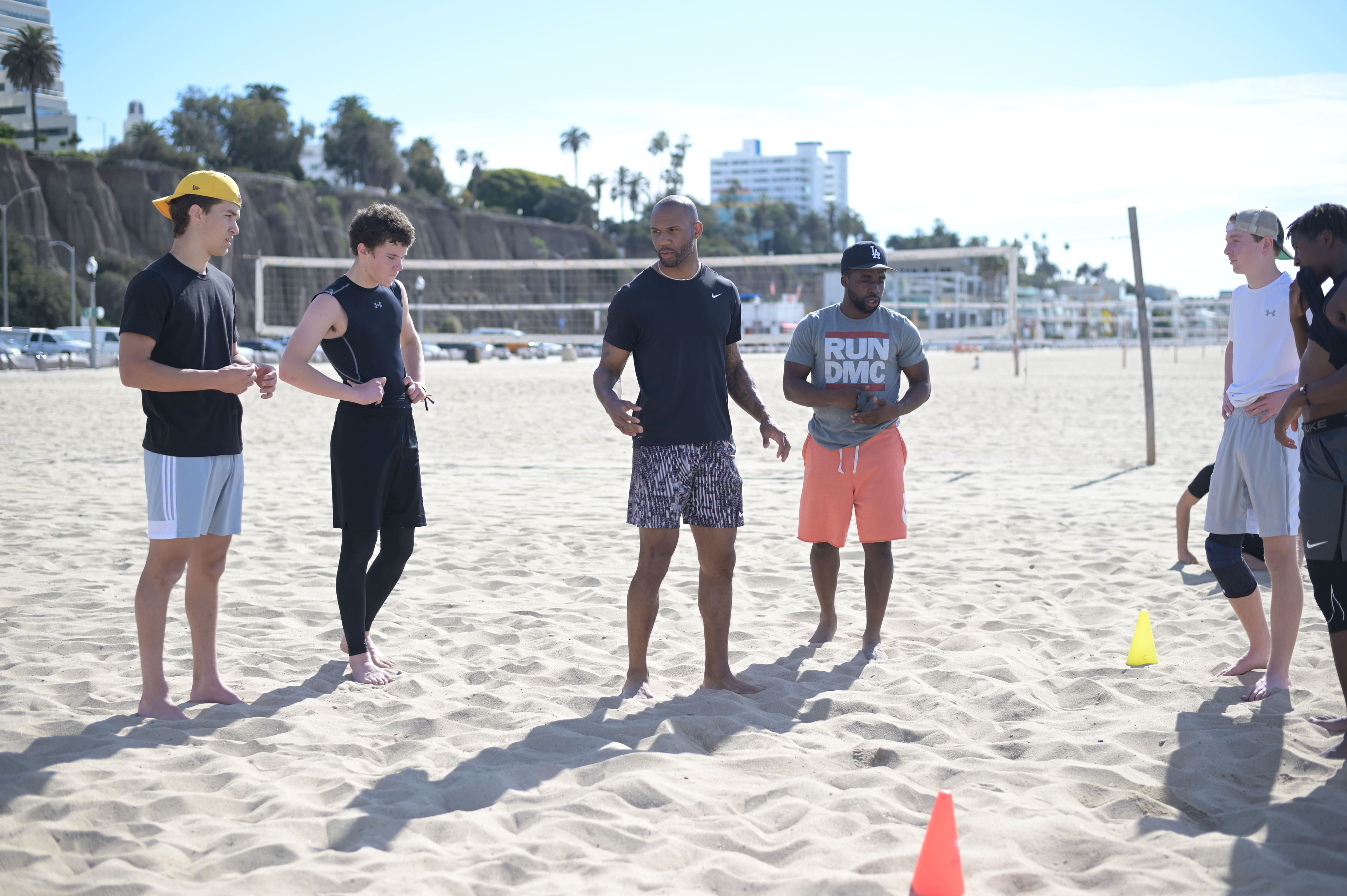
TRAINING PROGRAM
DESIGNED AROUND FIVE PILLARS OF TRAINING
Our program is based on 20+ years of training and working with some of the world's best football and performance coaches. This process aims to fast-track the athlete to maximum performance and prep them for college and the National Football League, NFL.

STRENGTH AND CONDITIONING
In its simplest form, strength and conditioning is the practical application of sports science to enhance movement quality. It’s grounded in evidence-based research and the physiology of exercise and anatomy. We all move a certain way. Optimizing how we move more efficiently through inputs of power dynamics creates an elite-performing athlete. A key pillar in strength and conditioning training is fully assessing movement patterns so that you can use movement-correct techniques to prevent injuries. Injury prevention is highly beneficial to athletes. An improved level of proprioception is often achieved with strength and conditioning work. Proprioception is the awareness of movement and position in the body. This can be worked on with specific exercises and balance work. The decreased injury due to strength and conditioning training also plays a large role in improving proprioception. A strength and conditioning program will look to improve your performance over time. Programming is performance-specific, using scientifically backed training methods. A proper strength and conditioning program is key to maximizing an athlete's capabilities to improve performance. At LPT, we identify key areas of improvement, customize a strength and conditioning regiment, and measure results accurately to improve performance. Performance will improve the technical, physical, tactical, and mental factors required to play at your best.
SPEED, AGILITY, AND QUICKNESS
In any sport, SPEED KILLS, which is why speed and agility training programs are essential for athletes of any age and sport. Whether you’re training for strength, endurance, or a combination of both, adding speed, agility, and quickness drills can take your game to the next level. All athletes can benefit from improved balance, quicker feet, and a faster reaction time, and this is exactly what Speed, Agility, and Quickness (SAQ) drills help you achieve. While SAQ drills are often considered interchangeable, it is important to recognize how these components relate and differ.


POSITION SPECIFIC TRAINING
Whether a wide receiver, defensive back, or linebacker, specific training at each position is a necessity to play at the next level. Each position traditionally has nuances, although certain drills and movements may sometimes be similar. Most football players at the college and NFL levels have played the same or similar positions for most of their careers. After age 15, all athletes should hone their craft at one position, offensively and defensively. Unless you play at a division 2 school or higher level, we recommend all players push to start on offense and defense. AT LPT, we take a detail-oriented approach to learning the fundamentals of each position that meets each athlete at their current skill level.
FLEXIBILITY AND MOBILITY
Flexible muscles and joints allow the joints to move through the proper range of motion. So, an athlete's mobility is also impacted if a muscle lacks flexibility. This, in turn, can alter movement and posture, impact performance, and increase the risk of injury. In addition, healthy movement includes a combination of joints that aren't supposed to move (immovable), with limited movement, and other joints that allow for a much broader range of motion. Functional movements typically require a blend of different joints to stabilize, support, and move the body. So, having the strength and stabilization to support the appropriate joints while another joint is moving and keeping those joints in a safe and optimal position is important. Good stretching can increase flexibility and athletic performance and decrease the chance of injury. All stretches are important, and a stretching routine should be personalized based on individual needs and weaknesses. One benefit you’ll gain is injury prevention by incorporating flexibility into your game.


SPORTS IQ AND EMOTIONAL INTELLIGENCE
Being good at football is not as straightforward as you would think. You need physical ability and coordination, but beyond that, you must be decisive too. In football, that means making good decisions in a split second: to pass or not to pass, tackle or intercept. In other words, you need a high football IQ. Executive Function, in the context of football, is a person’s ability to plan and carry out an action. At LPT, we focus not only on the physical elements of the game but also the mental ones. Our film study and mental preparation programs are critical to taking your performance to the highest level. Understanding coverages and route concepts to overcome the fear of tackling require a specific mental and emotional attitude and belief system. We help our athletes understand what kind of mindset is required to excel on and off the field as a top performer.

TRAIN LIKE A PRO.
